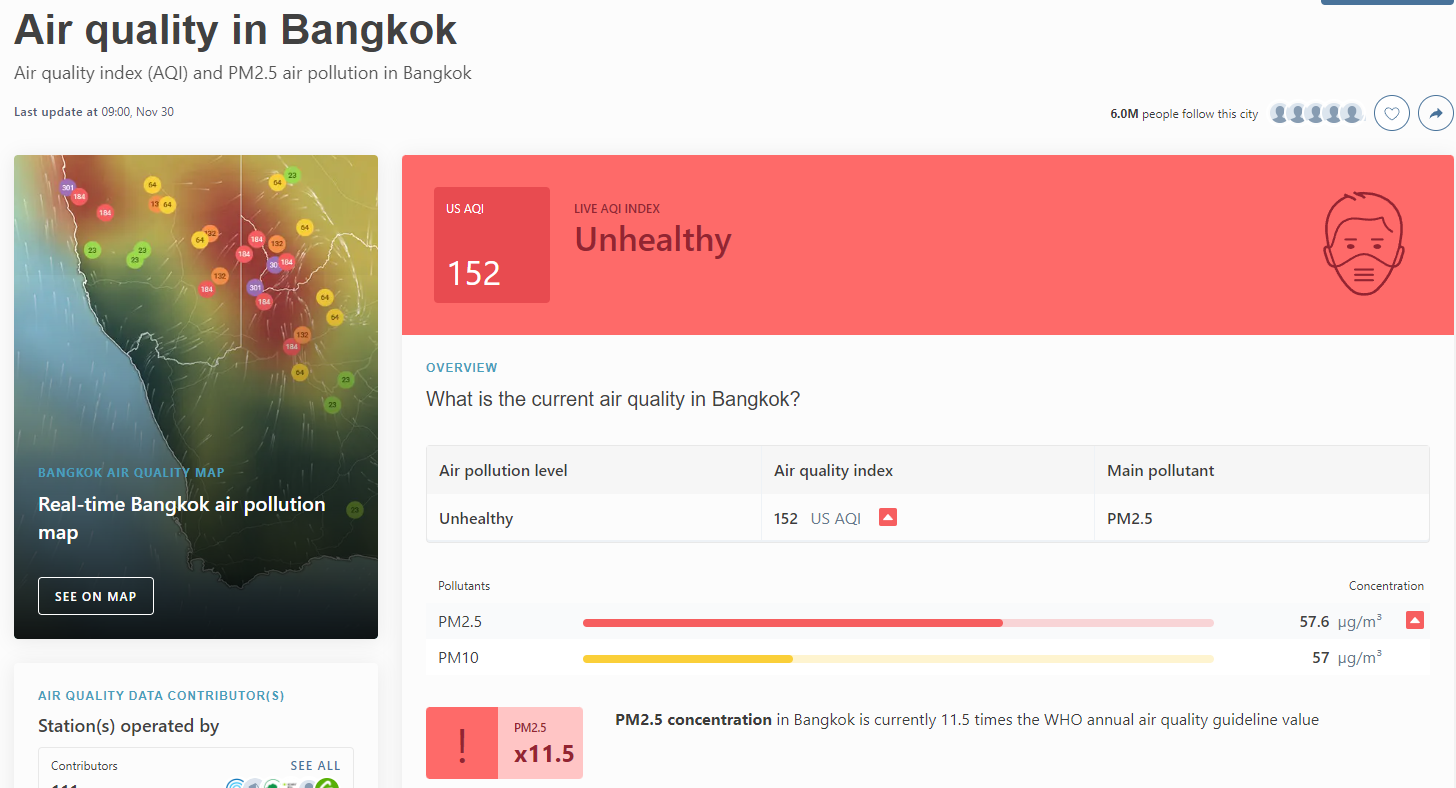It is that time of year again where Bangkok suffers from a dangerous level of PM2.5.
Particulate Matter (PM) is a mixture of solid and liquid particles that are suspended in the air. These are categorized into coarse, fine and ultrafine. PM2.5 are fine particles that have a diameter less than 2.5 micrometers (more than 100 times thinner than a human hair) and remain suspended in the air for longer durations. The health risk with PM2.5 is that they can travel deep into the respiratory tract, reaching the lungs and entering the blood stream.
How is Bangkok Compared to Other Major Cities.
| City | Population | Size |
|---|---|---|
| Bangkok | 10+ million | 1,569 km² |
| New York | 8.3+ million | 783.8 km² |
| London | 8.9 million | 1,572 km² |
| Seattle | 740+ thousand | 217 km² |
Can air pollution cause health problems?
Air pollution refers to substances in the air that are detrimental to either human health and/or the planet as a whole. At significant levels, all types of air pollution pose a risk for adverse health effects. The amount of risk for health complications depends on one’s overall health, the pollutant type, the concentration, and the length of exposure to polluted air.
Impact of breathing unhealthy air – overview:
The World Health Organization (WHO) has deemed air pollution as the greatest environmental health risk today, estimated to contribute to 7 million premature deaths annually.4 Among children under the age of 15, it is the leading cause of death, killing 600,000 every year.5
Air pollution is described as a ‘silent killer’ because it is rarely the direct cause of death. Rather, air pollution is the world’s 4th leading contributing cause of early death, accounting for:6
- 29% of all deaths and disease from lung cancer
- 17% of all deaths and disease from acute lower respiratory infection
- 24% of all deaths from stroke
- 25% of all deaths and disease from coronary heart disease
- 43% of all deaths and disease from chronic obstructive pulmonary disease
It is estimated that 92% of the global population breathes unhealthy air. While this figure varies region to region, nowhere is without risk. The 2019 World Air Quality Report found that 72.7% of people living in Europe breathe air exceeding the WHO’s PM2.5 guideline for annual exposure (< 10 µg), while 98.8% of people breathe unhealthy air in South Asia, the most polluted region globally.
High air pollution levels can cause health problems including:
- Short-term effects: difficulty breathing, chest pain, wheezing, coughing, general respiratory discomfort, and irritation of the eye, nose, and throat.
- Long-term effects: lung tissue damage, cancer, early death, and the development of respiratory illnesses such as asthma, bronchitis, and emphysema.









